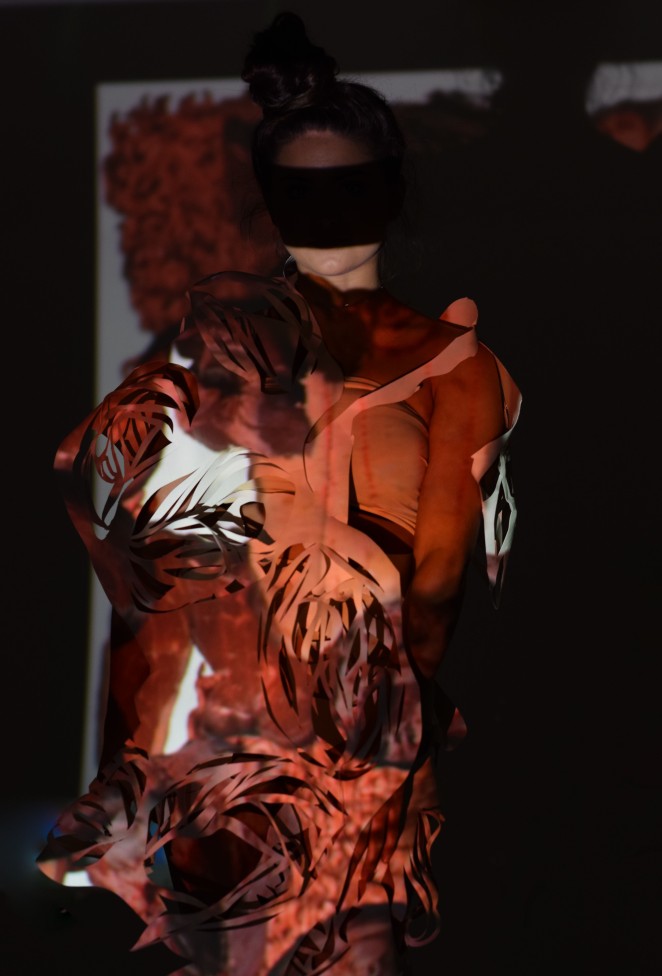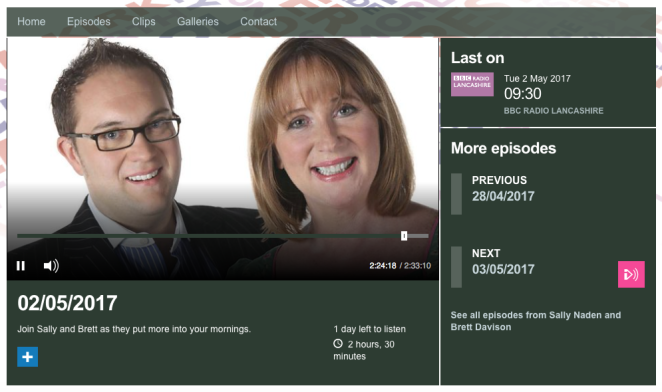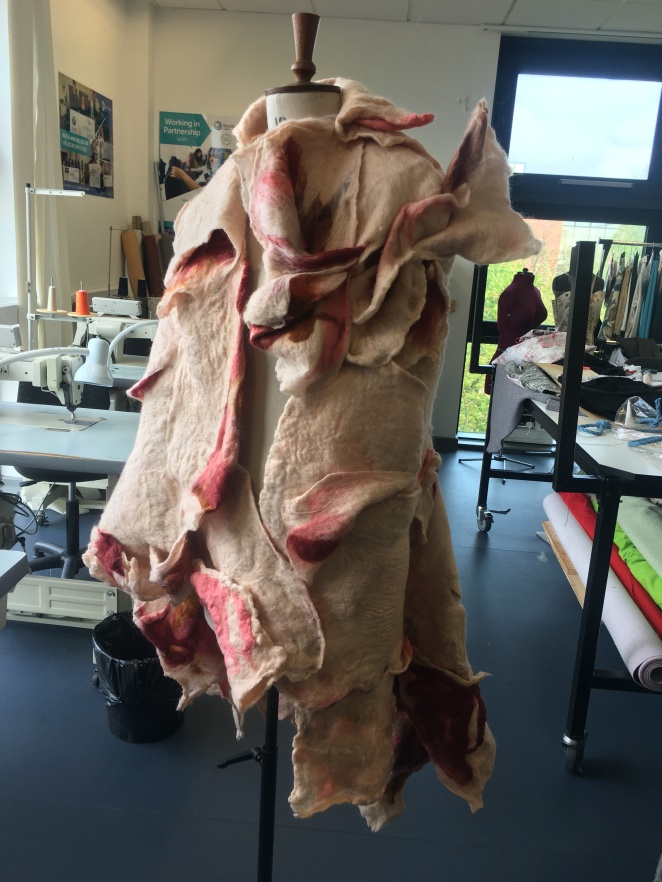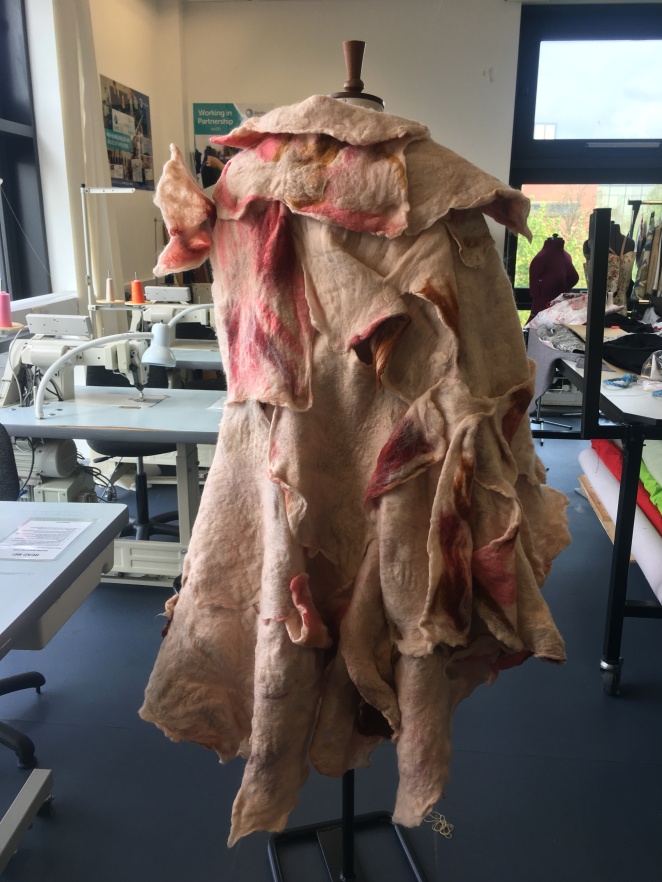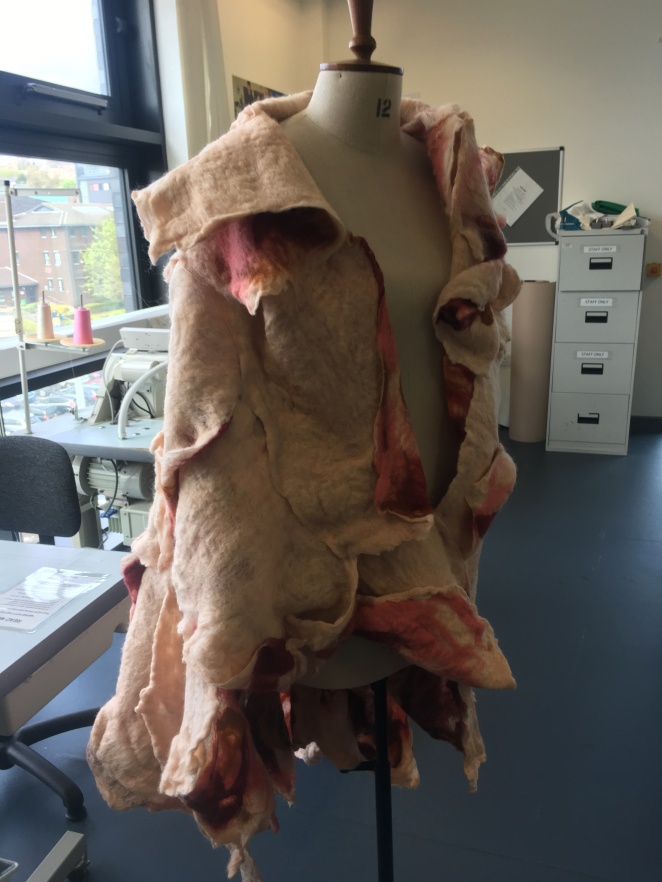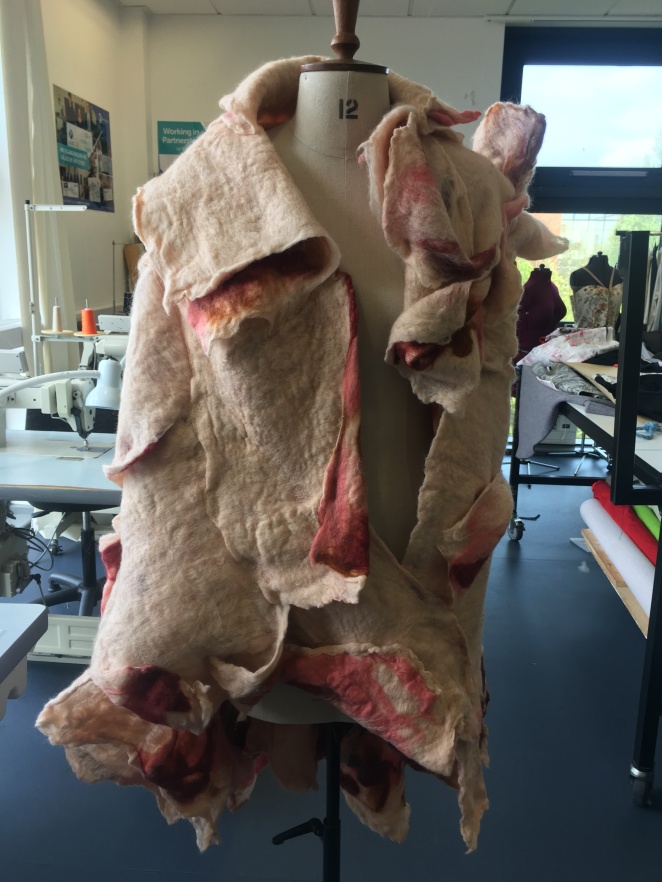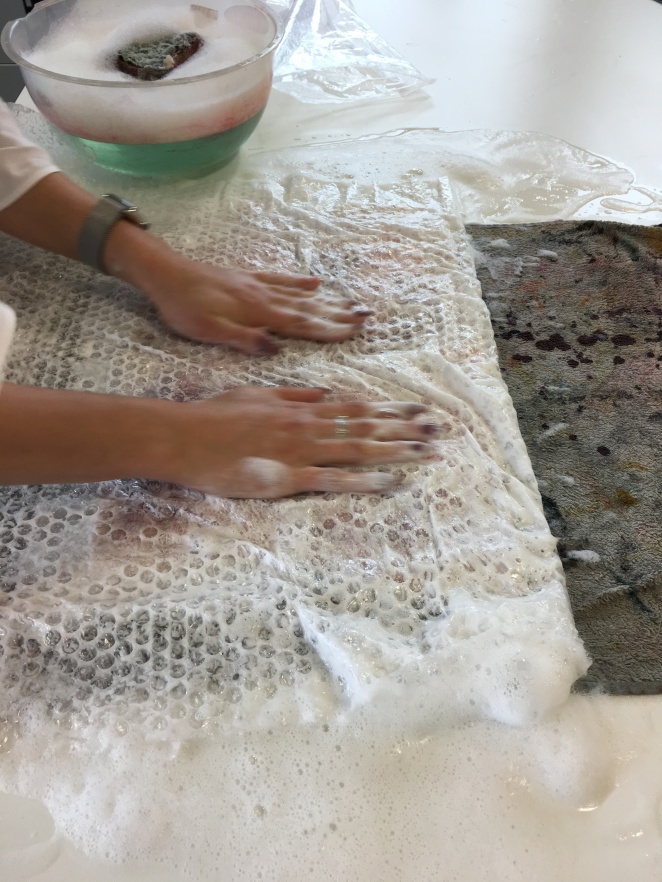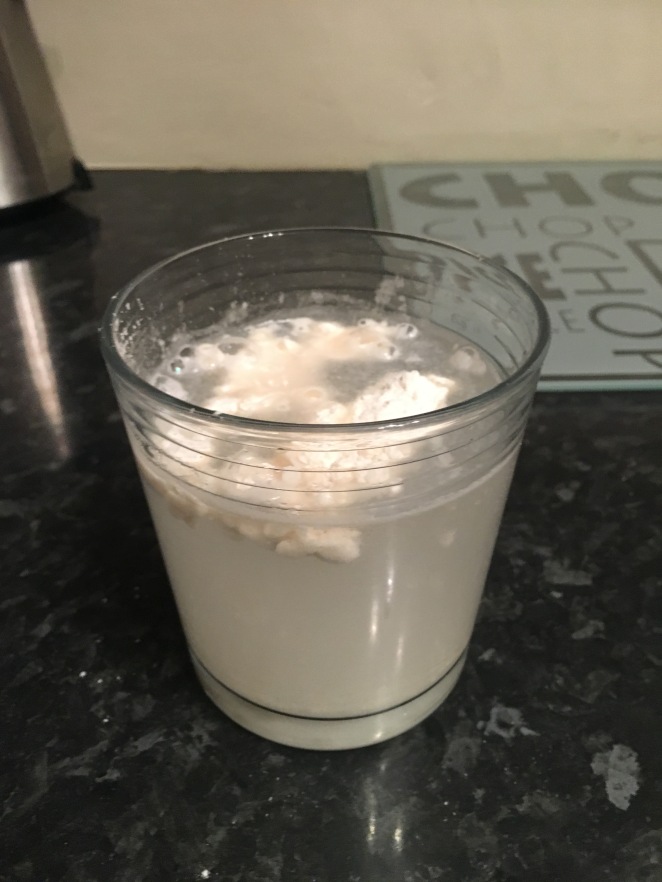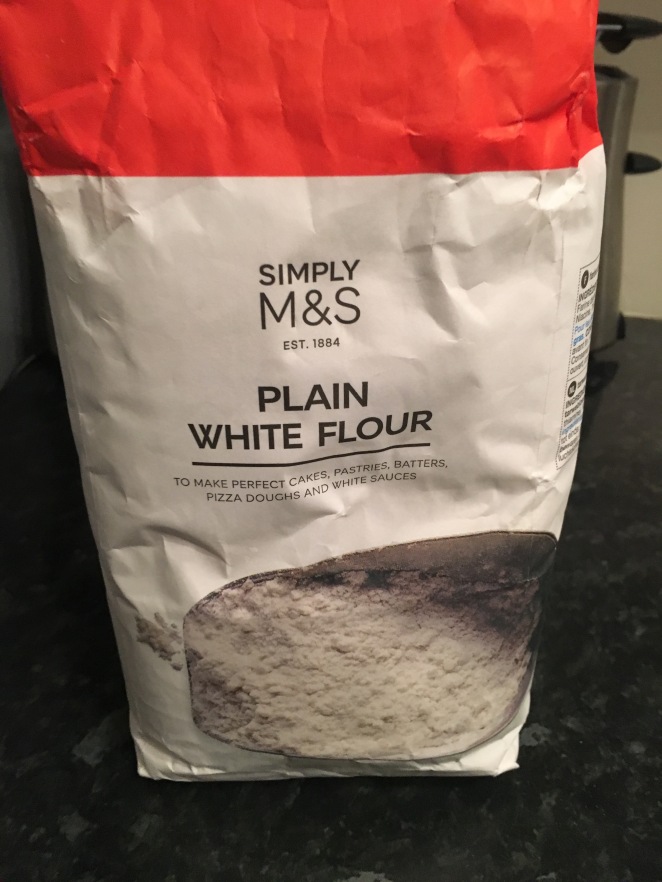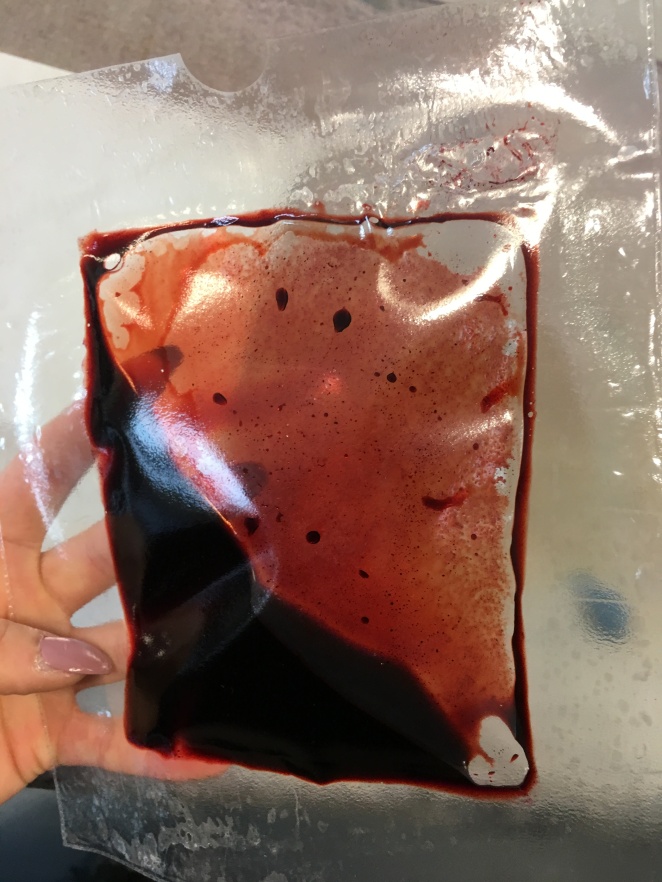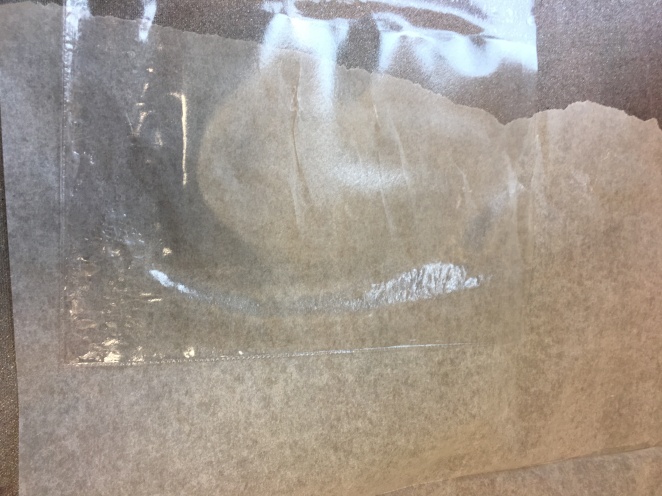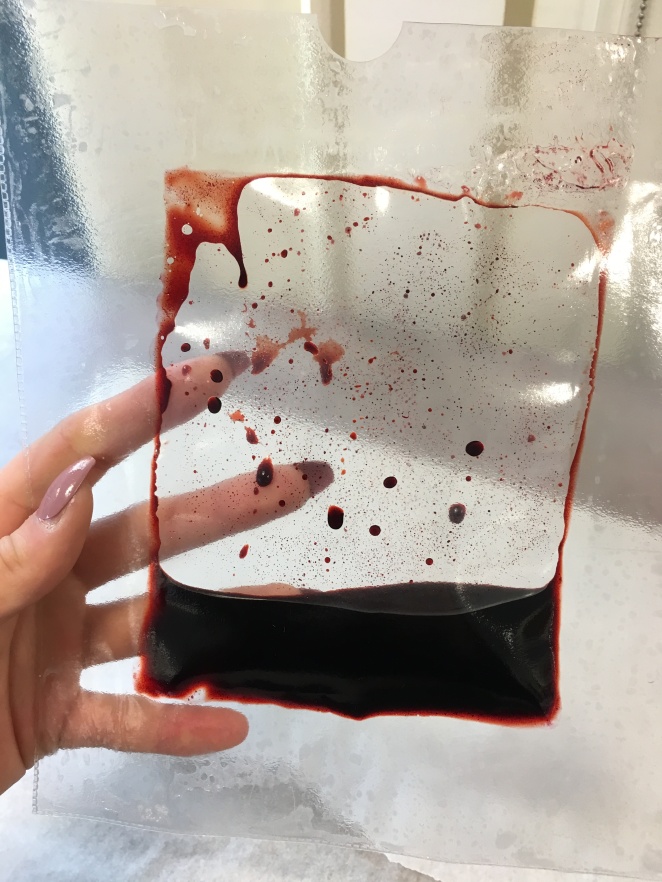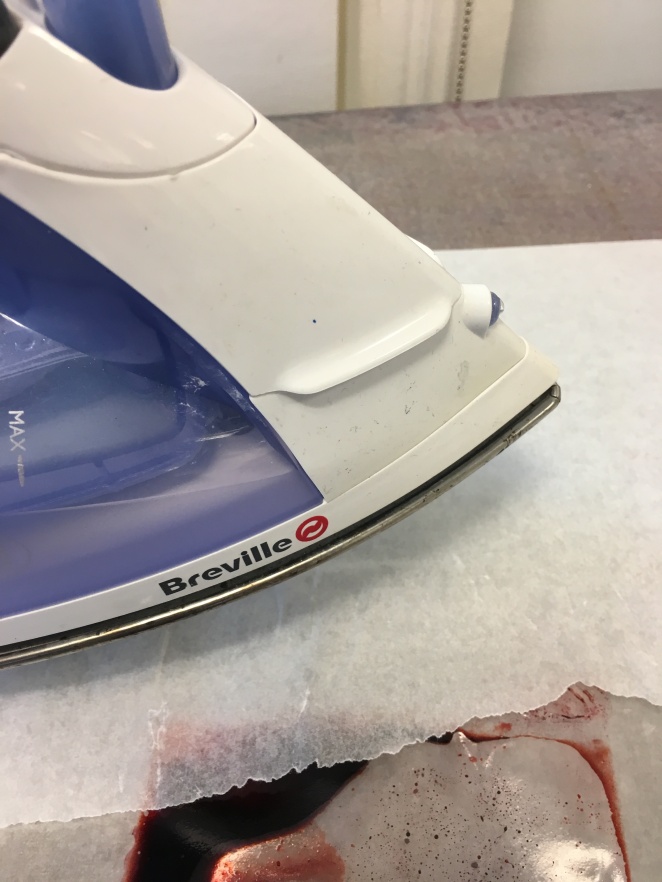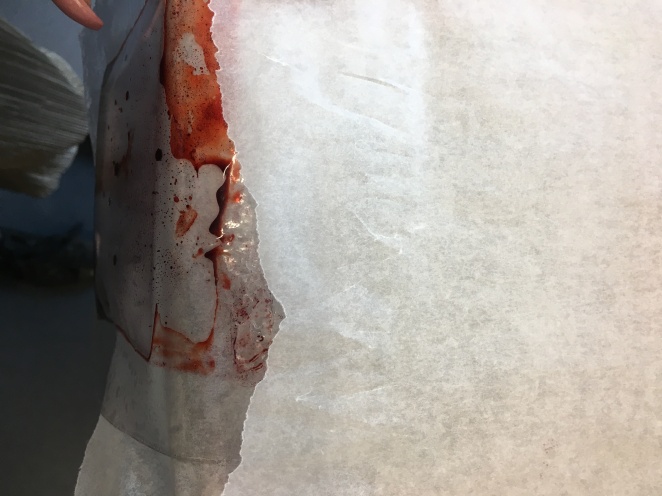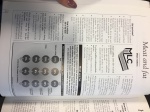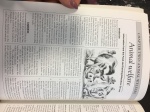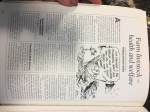Thursday 4th – Friday 5th May
Inspired by the Uniqlo window display on Oxford street, I wanted to show the product that comes from each of the industry’s in the way that Uniqlo show the process of linen being manufactured throughout the use of the materials.
Therefore, selecting the different objects was the most challenging part, as I felt that they needed to stand out as being the product of the related garment rather than the garments being seen as a collection. As a result, the objects that I selected where a cast of a roast chicken, jar filled with sheep wool and dog fur, and finally milk bottles filled with a milk like substance.
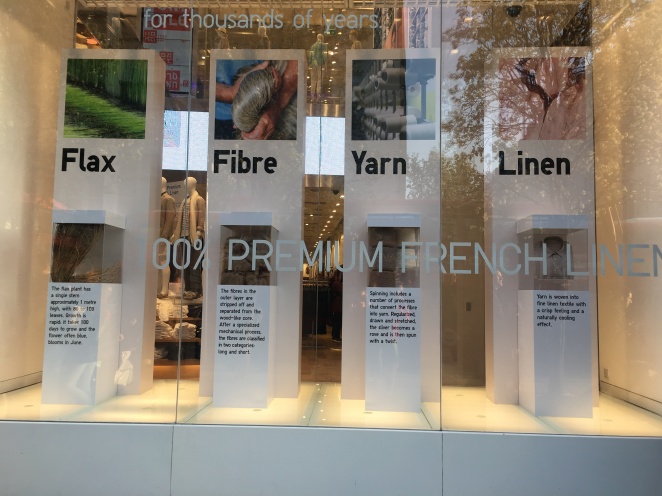
Chicken Cast
On my way to college I went to the local Lidl shop where I purchased the chicken. In order to cast this successfully, I needed to stitch up the hole in the chicken where the insides of the chicken where removed. Once that was carefully done, the chicken was placed inside a tub where we then left the chicken as we created the alginate. As we pored the alginate over the chicken, we had to ensure that the chicken was completely covered throughout the process. After leaving the alginate to set, we then removed the chicken from the mould carefully, without breaking the alginate.
Now that we had the mould we were able to mix the plaster before pouring it into the alginate. After tapping the surface to remove any air bubbles, we left the cast until it became solidified. This would take around 20 – 30 minutes.
Once it had set the solid chicken was then removed from the alginate. This was then left until it had cooled down before I then cleaned up the cast, filed the rough edges and painted the surface using a mixture of white acrylic and PVA glue to remove the matt finish.
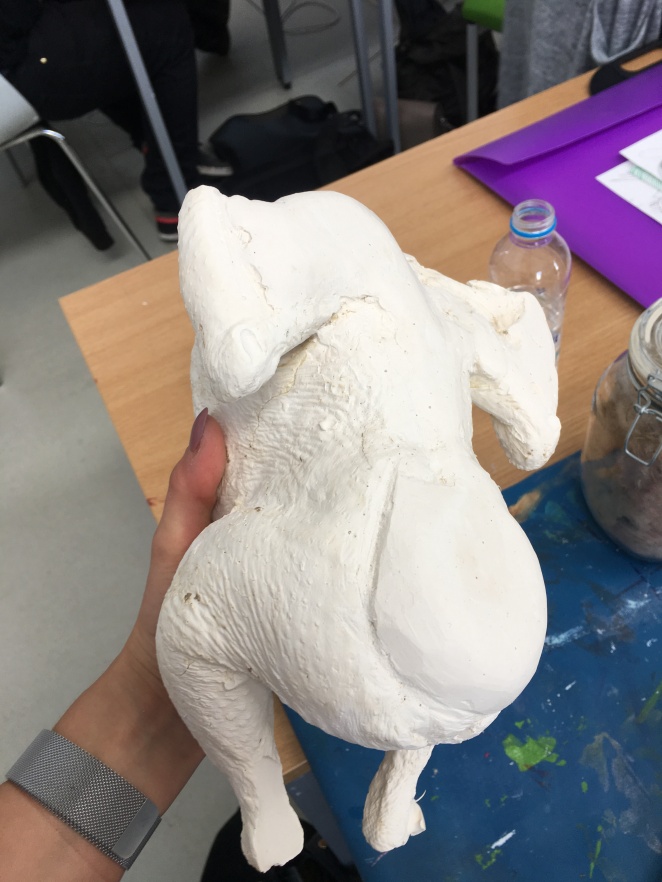
Fur Jar
Whilst the plaster chicken was solidifying, I was able to nip to the shop to purchase a jar. The jar that I selected has a sealed lid. I chose this because the sheep’s fur that I would be filling the jar with smelt, as it came straight from the sheep’s body. Therefore, this would also keep any insects and dirt locked away from the surroundings.
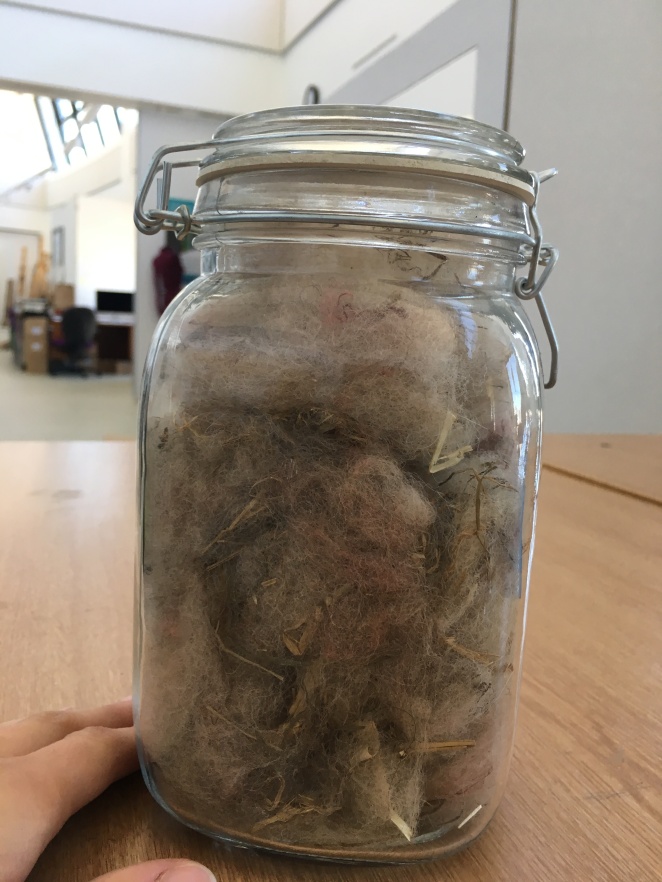
Milk Bottles
On my way home, I stopped by my Uncle’s Ken’s farm and my Dad’s house where I was able to collect empty milk bottles which were no longer in use. This would then be filled with a milk like substance closer to the time of the exhibition. This will reduce the chances of the liquid being spilt.












